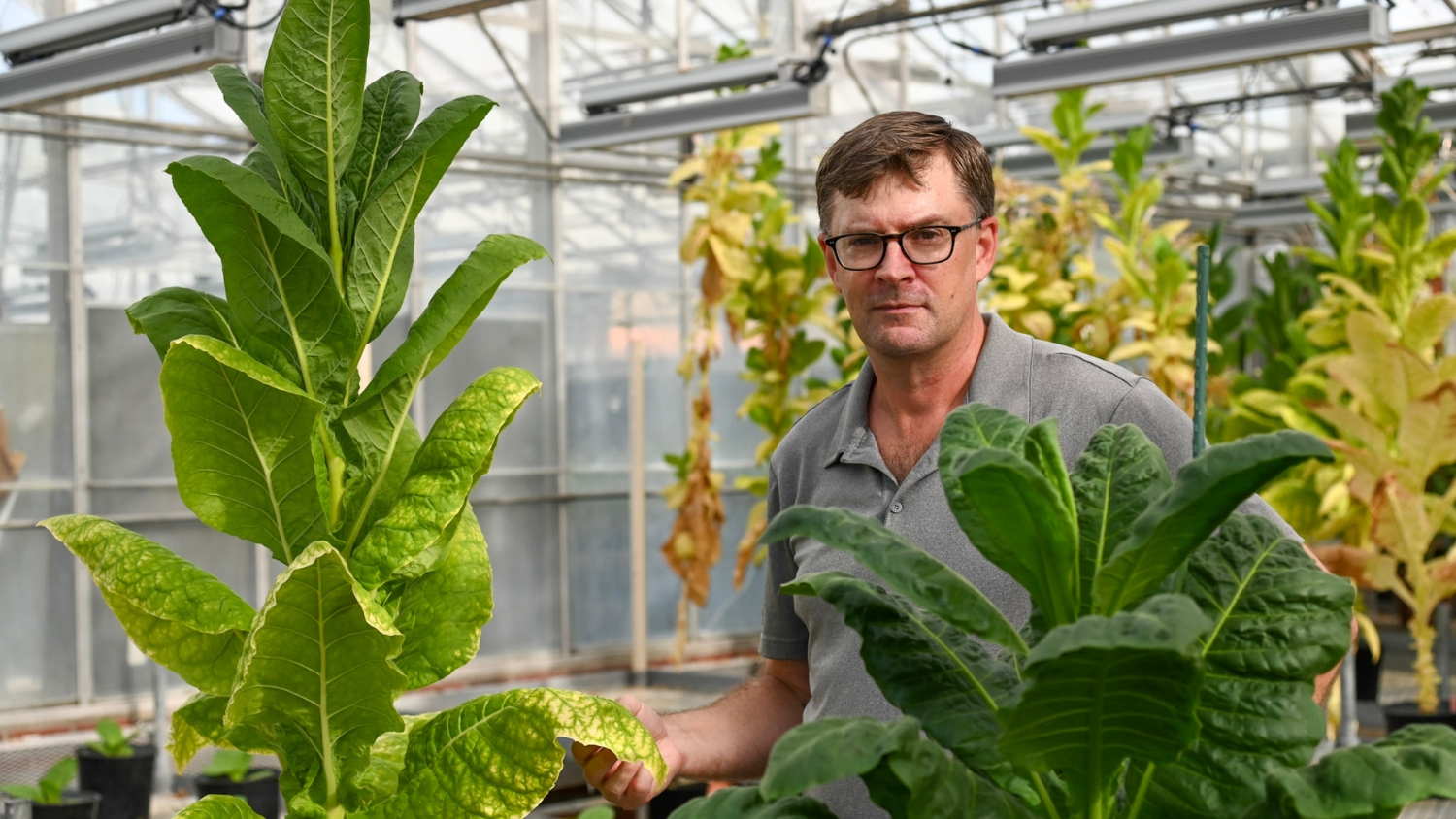
Tobacco has a long history with humans. It has had a storied, sometimes holy or ceremonial, role in populations throughout human history around the world, including our state. It was North Carolina’s original cash crop, with a record high of almost one billion pounds produced in 1951.
Tobacco acreage in the United States has been on the decline in recent years. However, tobacco is still an important NC crop, consistently ranking as one of the state’s top revenue crops, valued at $524M in 2022.
Researching An Old Crop For New Impact in Human Health and Plant Biology
North Carolina State University, too, has a long history with tobacco, including plant improvement and cultivar development. Thurston Mann was hired as the first NC State tobacco geneticist in 1949. Since then, multiple researchers in the Crop Science and Plant Pathology Departments have contributed to developing new knowledge and improved tobacco varieties.

Today, approximately 65% of NC tobacco acreage is planted with varieties that originated from the university. Despite the crop’s historical and economic value, times and interests have changed.
In 1994, U.S. law restricted federal government funding for tobacco research. NC State’s modern Nicotiana research, now mostly privately funded, ranges from the agronomic improvement of commercial varieties to the genus’ broader use as a model plant.
A Variety of Improvement Goals
NC still leads the nation in flue-cured tobacco production, with over 116,000 acres harvested in 2022. So, grower interest in variety improvement remains high.
Commercial tobacco’s end use makes it an unusual crop. Ramsey Lewis, the Charles and Marilyn Stuber Distinguished Professor of Plant Breeding at NC State, is frequently pursuing disparate goals.
Prioritizing Growers’ Needs
For growers, agronomic traits like high yield and disease resistance are paramount. Since growers have limited acreage of this lucrative crop, maximizing yield while minimizing disease is essential.
“Black shank is one of the most common and detrimental diseases in tobacco,” Lewis said. “It normally contributes 3-12% of losses but can be up to 80% of an individual crop depending on the year, environmental conditions, and variety grown. It could decimate an entire crop.”
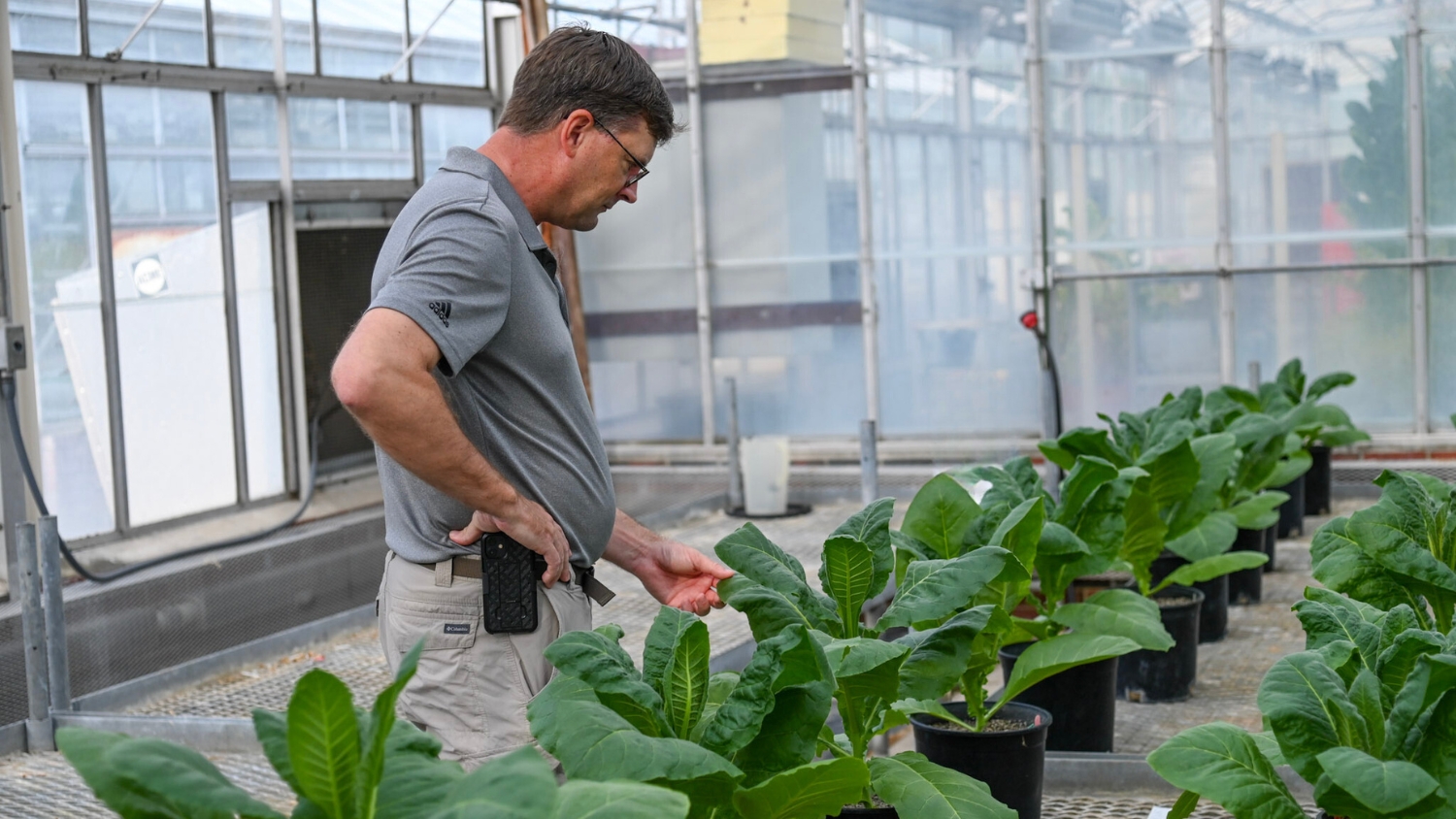
Lewis has released five varieties in his 20 years at the university, including NC 1226 in 2020 and NC960 in 2022, pairing high yield with significant black shank resistance. NC 960 has been one of the highest-yielding varieties in the NC Official Variety Trials and is estimated to equal eight percent of the state’s 2023 flue-cured tobacco crop.
Current breeding efforts focus on high yield ability, strong resistance to bacterial wilt, and early maturity.
“Yield and disease resistance are usually inversely correlated. As long as tobacco is a legal product, we have a grower mandate to research flue-cured tobacco varieties that provide advantages to producers. We study diverse sources of disease resistance and use modern approaches to develop varieties adapted for North Carolina.”
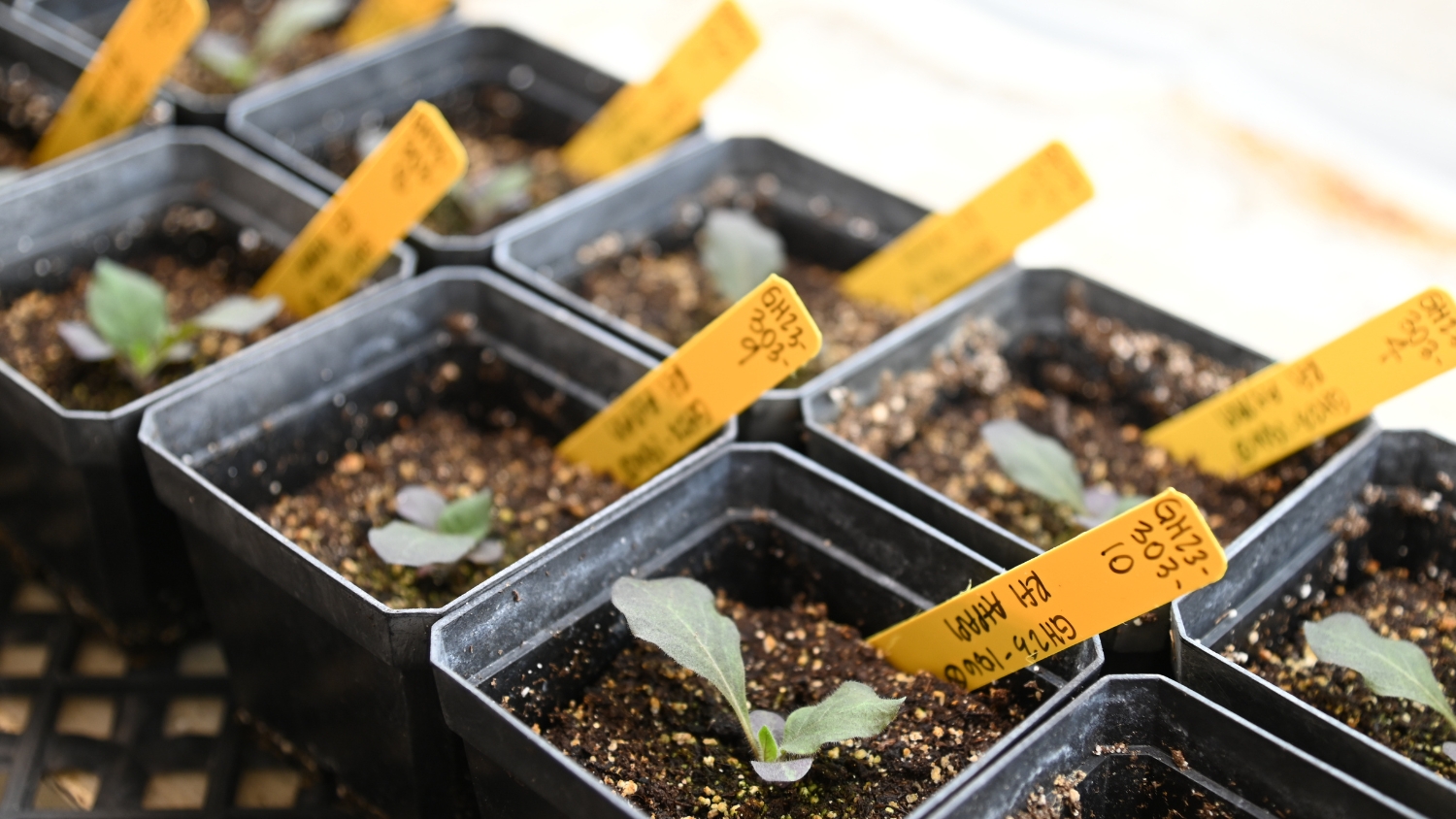
Improvements that Benefit Human Health
The tobacco industry and consumers have other interests, including color, texture, flavor characteristics and the reduction of harmful constituents such as tobacco-specific nitrosamines (TSNAs), other carcinogenic compounds and potentially nicotine.
TSNA accumulation is complex but mostly driven by the amount of tobacco alkaloids and nitrites in the plant. Minute amounts of TSNAs are naturally present in fresh tobacco but increase during curing and processing.
Variety selection has the potential to influence TSNA accumulation, although soil nitrogen levels, environmental conditions, and harvest timing can also play roles.
Lewis and NC State molecular biologist Ralph Dewey jointly hold nine patents (and more already filed) for their ground-breaking progress in breeding for tobacco harm reduction.

Compliance May Require New Varieties
Recent FDA announcements suggest that reduced-nicotine tobacco regulations may be on the horizon. That change would necessitate an entirely new lineup of production varieties to meet lower thresholds.
Lewis says this may be doable but requires balance to avoid unintended consequences.
“Trait expression is easily manipulated in Nicotiana species. But plants are complex. We can induce changes, but it doesn’t mean something else won’t also change in an undesirable direction,” Lewis said. “For example, significant reductions in yield or cured leaf quality can have serious ramifications for growers.”
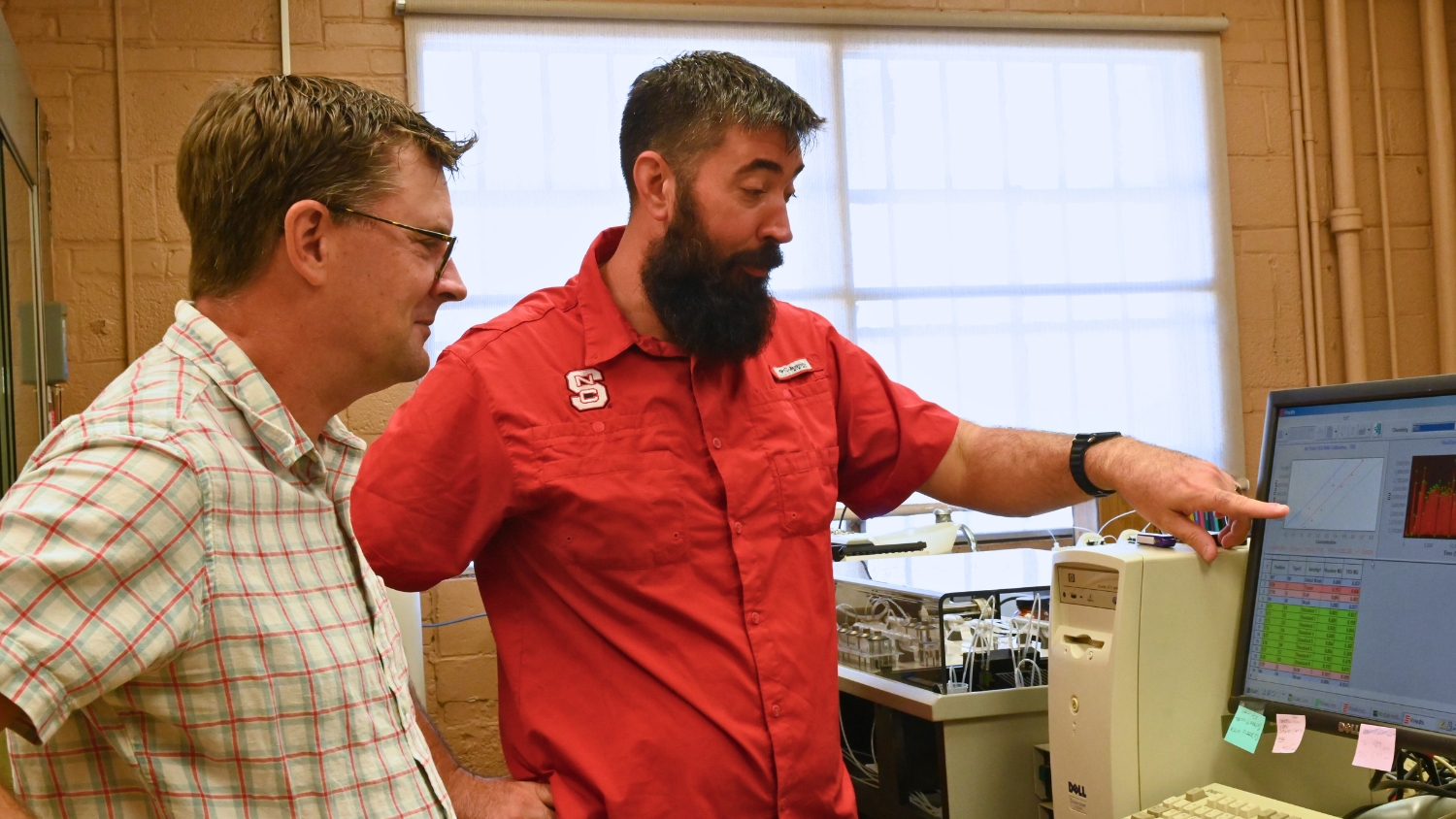
His group uses classical breeding by intentional crossing, molecular marker-assisted breeding, and plant transformation to study tobacco gene function. Identifying, adapting, and assessing trait expression is key to shaping a variety that performs for all interested parties.
“We use all plant breeding approaches in our work, including introduced genetic variability, interruption of biosynthetic genes of interest, and reduced gene expression to stop chemical accumulation,” Lewis said. “This work puts NC State in a strong position to support growers and respond to industry change.”
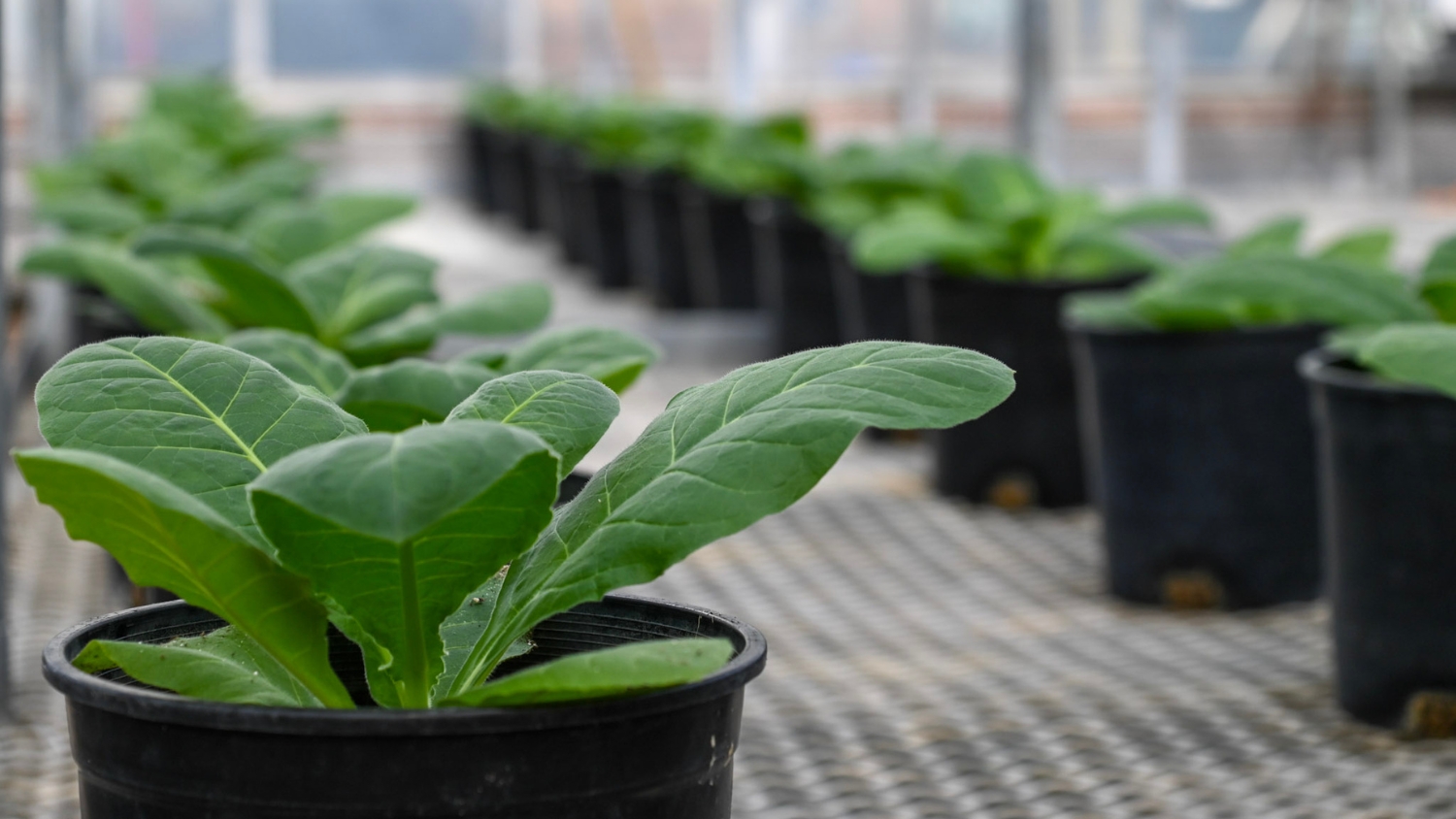
Reverse Engineering Tobacco Traits
The university’s complement of tobacco breeding and molecular biology research helps reveal genetics’ role in important trait expressions like chemical attributes, leaf chemistry, natural product accumulation and disease resistance.
Several of Lewis and Dewey’s patents mark the development of their ZYVERT® Technology, which uses breeding techniques such as genetic engineering and induced mutations to reduce TSNAs.
Traditionalists may bristle at the idea of genetic modification, which can involve eliminating and replacing target genes or introducing foreign genes to interrupt or shape new plant traits. However, the practices have established roots in several crops.
Originating in 1996, Bacillus thuringiensis (Bt) crops like corn and cotton are widely distributed examples of genetic crop modification where introduced DNA has provided significant agronomic and environmental benefits. The new non-browning ‘Arctic’ apples are a modern application of interrupting a plant’s innate genetic pathways.
But genetic engineering is usually for knowledge-building in tobacco, ironically the first plant to be genetically modified.
“The tobacco industry doesn’t embrace genetic engineering to develop new commercial varieties,” Lewis said. “We use these techniques to learn about Nicotiana’s traits in the lab as proof of concept. We can then sometimes use more commercially acceptable breeding methods to target the identified response.”
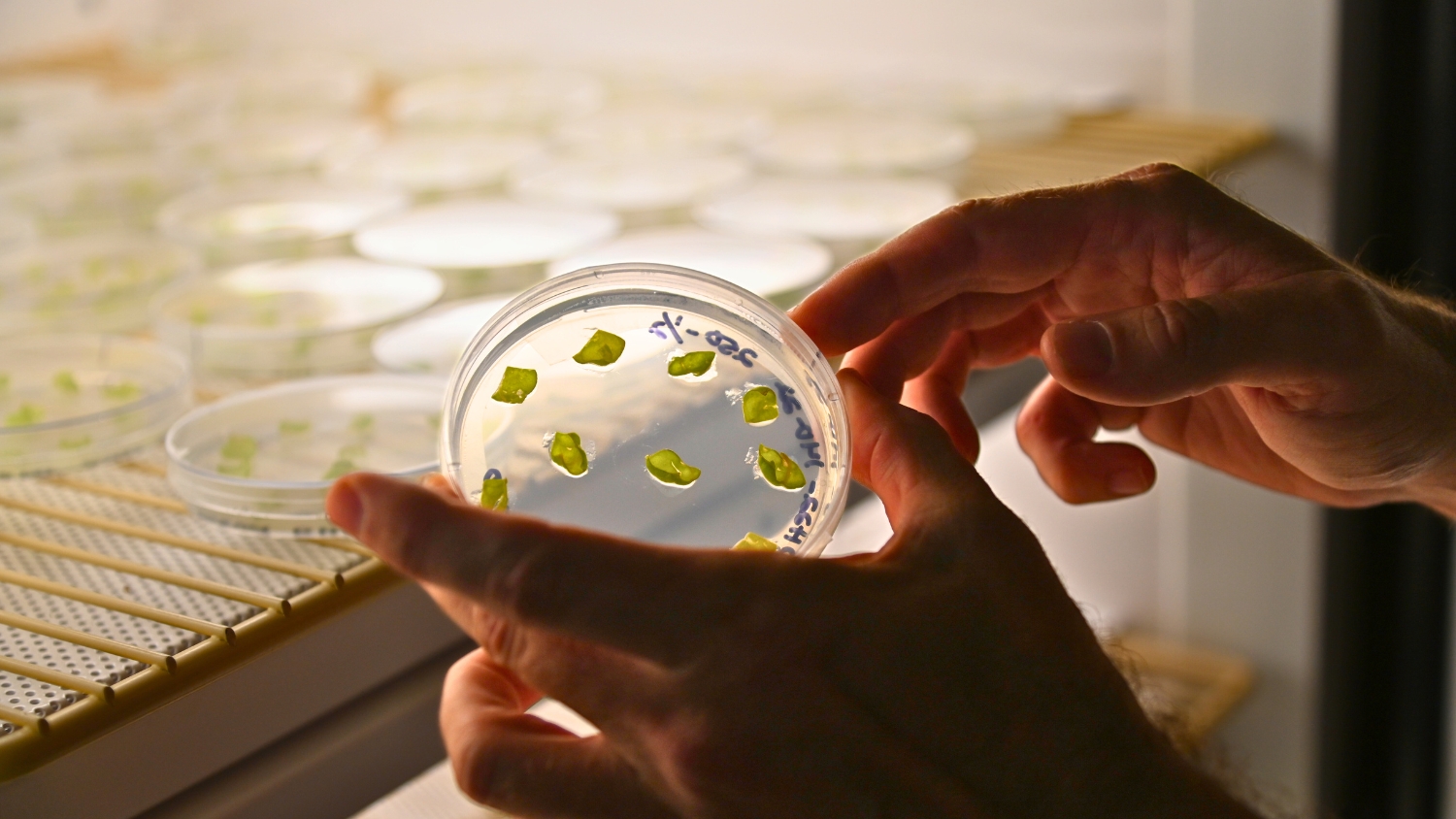
Tobacco’s Genetic Library
Traditional breeding requires a diverse set of genetic puzzle pieces to accomplish these goals.
One of Lewis’ most valuable tobacco breeding assets is a responsibility the university inherited in 1994 from the USDA — maintaining the U.S. Nicotiana germplasm collection.
The seed library originated in the 1930s when the U.S. government recognized the need for tobacco improvement, particularly in disease resistance, and supported a worldwide search for genetic diversity within the Nicotiana genus. The collection includes over 2,100 accessions of Nicotiana tabacum and 300 accessions of approximately 65 wild relatives.
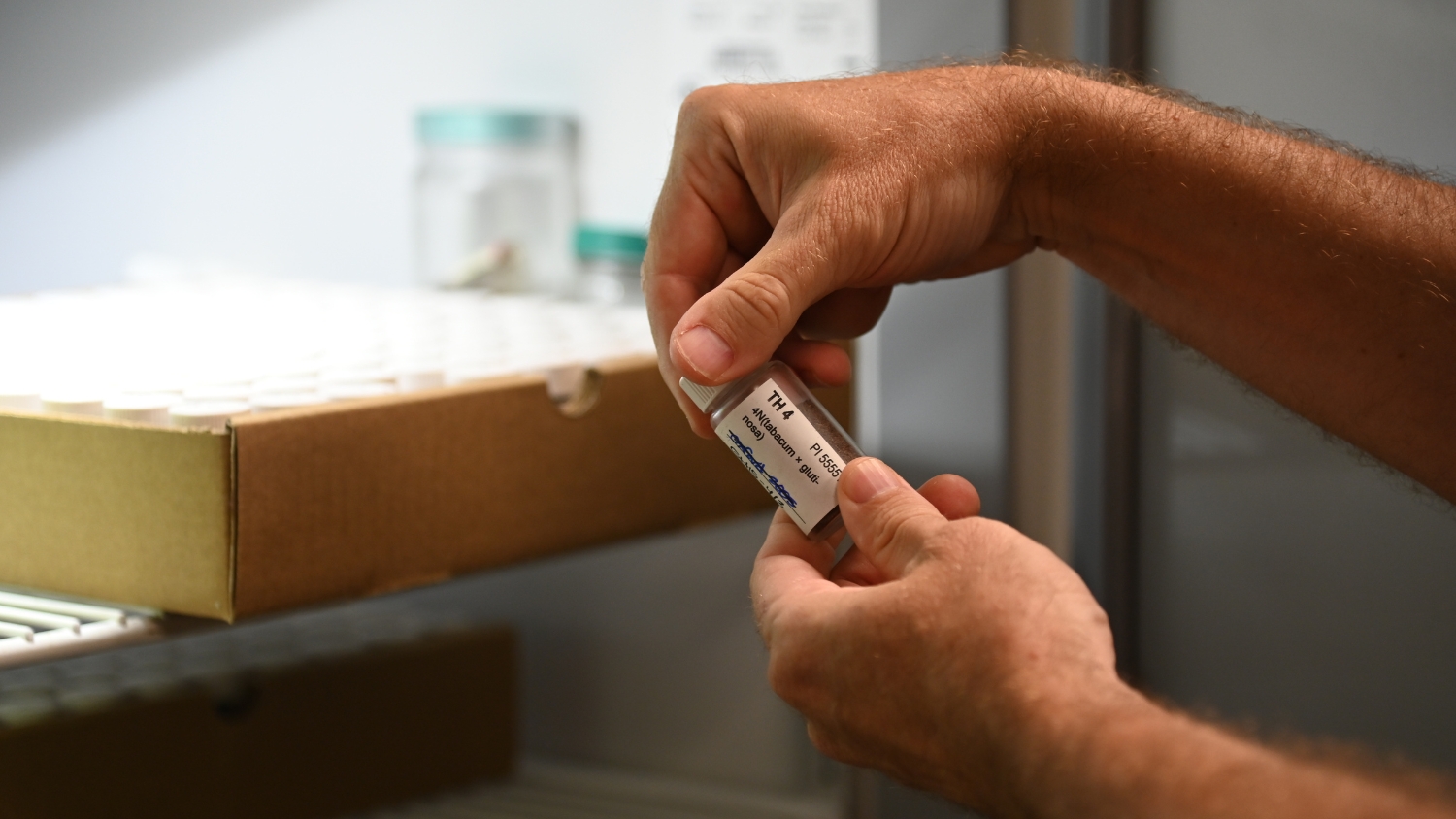
Tobacco’s frozen family tree offers Lewis and other plant biologists a trove of genetic variability, some of which offer sources of disease resistance and modified leaf chemistry. It’s an essential resource for variety improvement when cutting-edge CRISPR techniques are not an option.
“We maintain the most complete and valuable tobacco germplasm collection in the world. It serves plant biologists worldwide who request samples for breeding improvement,” Lewis said. “This range of plant diversity would be nearly impossible to reconstruct.”
Lewis and his team fulfill over 700 seed requests per year, mostly to U.S. agencies, universities and companies but also to international groups. The group maintains the collection’s viability and quantities by isolating and methodically growing out each species and variety roughly every ten years.

Nicotiana as Model Plants
The Nicotiana genus provides immense research value beyond production tobacco.
Most Nicotiana species are day-neutral perennials, which offer unique research benefits; they flower continuously and are easily pollinated on any day, at any time of day. Unlike other crops such as soybeans and peanuts, they produce thousands of seeds per cross, making them ideal for quick-turn graduate research and advancing foundational research.

As easily manipulated and reproduced plants, Nicotiana species are highly useful to advance interdisciplinary knowledge of plant chemical pathways, as well as viral, fungal and nematode research.
Lewis also oversees the university’s tobacco chemistry lab, which processes over 8,000 samples yearly to quantify natural products like alkaloids, nitrates, reducing sugars and other leaf components. The lab serves tobacco faculty and other plant biologists inside the university and out.
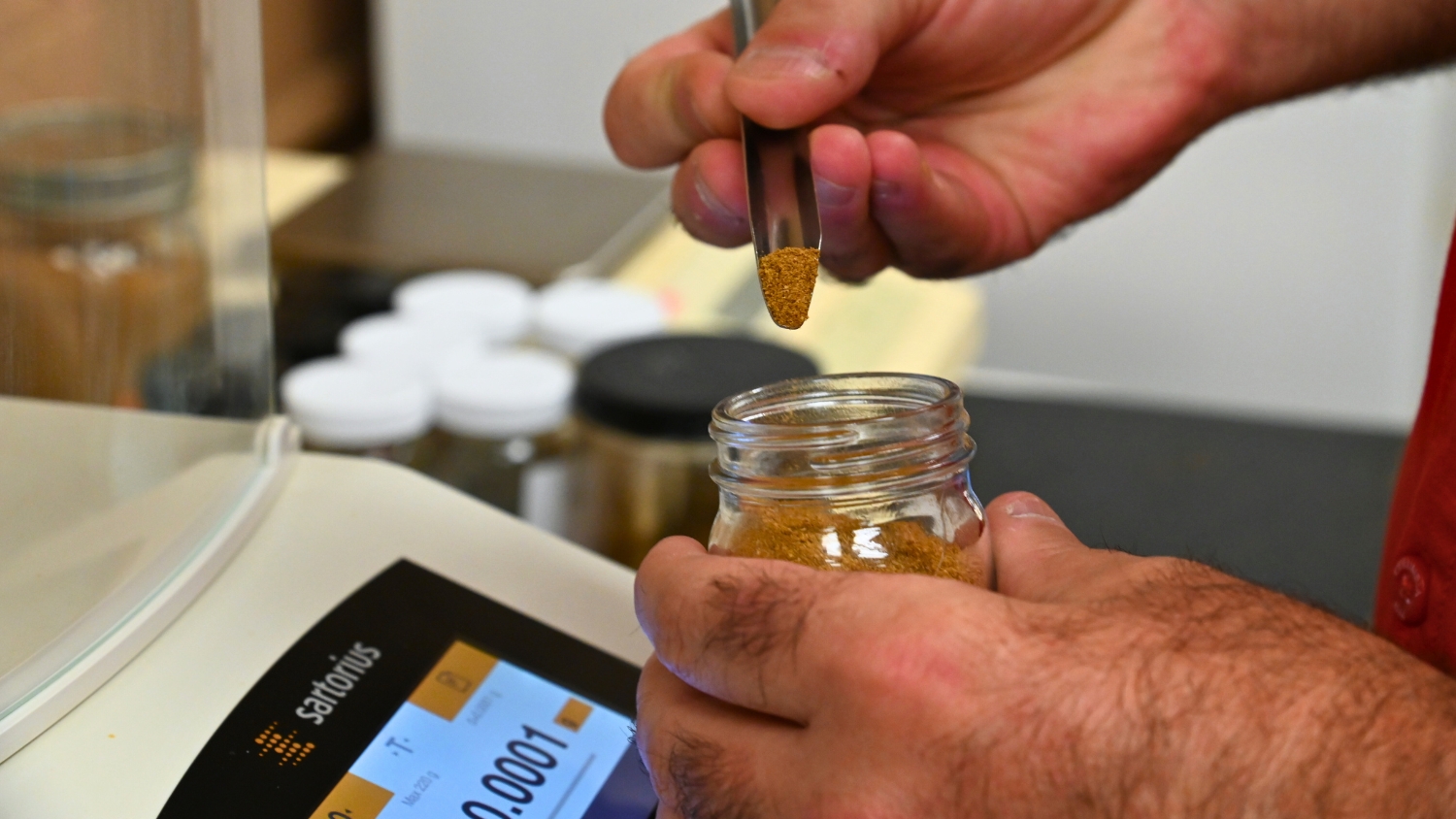
Complex Chemistry
Lewis has encountered several of Nicotiana’s interesting traits and compounds. One of particular value to researchers is the overexpression of a flowering time gene that can reduce the generational time.
“It can require eight to twelve years from an initial breeding cross to the release of a new variety. Half of that time is spent developing new genetic material. If we can reduce that by using faster-flowering plants, we can reduce the time to commercialize new varieties.”
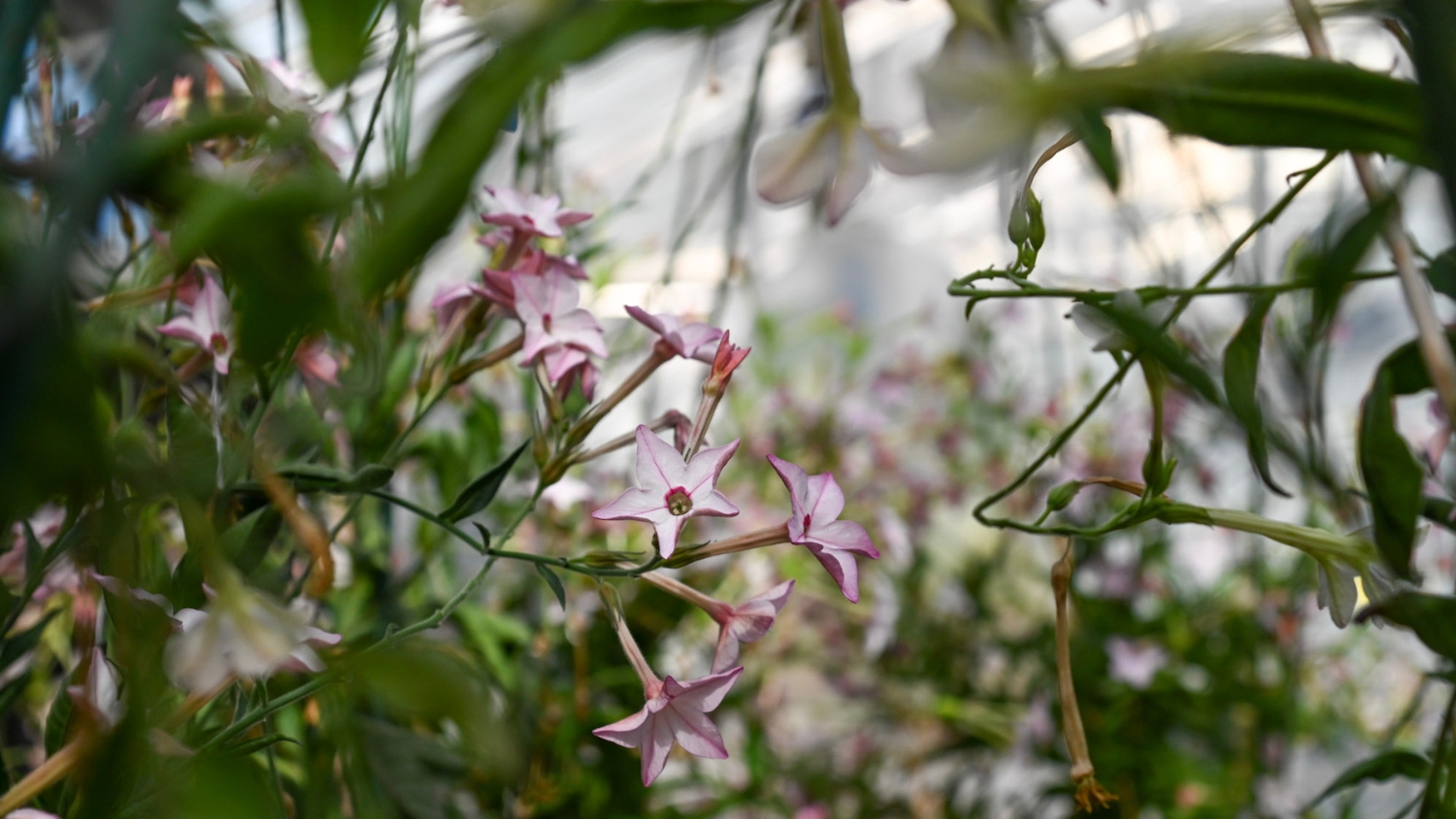
Nicotiana species hold a variety of potentially useful traits.
“The genus has a number of interesting leaf surface compounds that might affect interactions with insects and plant pathogens in other crop species. For example, we’ve noticed that when a specific gene is deleted, plants are more attractive to Japanese beetles.”
Lewis cites another species whose flowers are irresistibly attractive to hummingbirds.
“There are subtle, underlying differences in this plant’s chemistry that could have relevance in many crops. It’s a fascinating plant.”
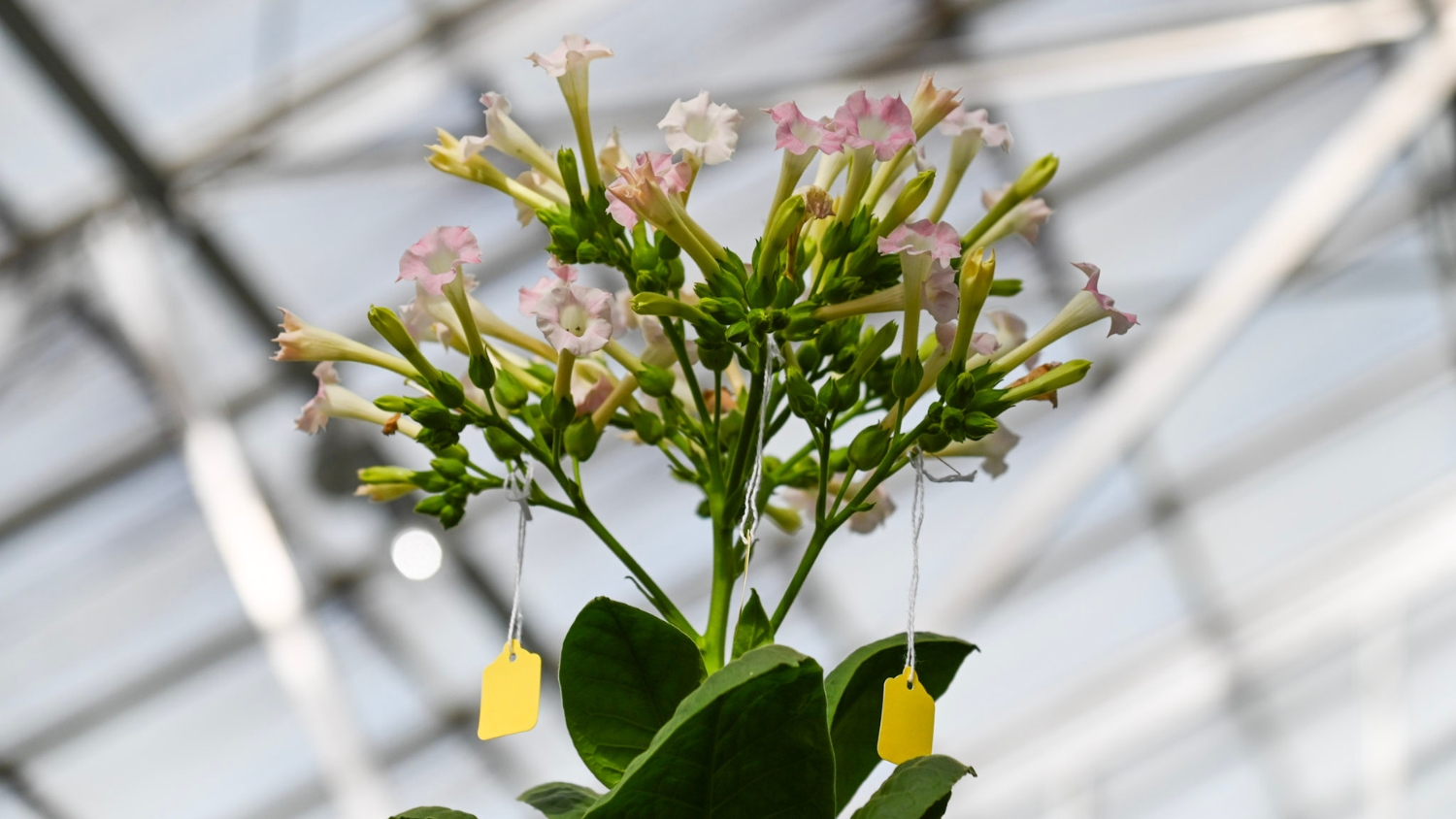
Want More Plant Progress?
Crop and Soil Sciences’ research impacts farmers, students, and NC citizens through innovations in food, feed, fuel, and fiber. Follow how our discoveries affect agriculture and environmental science by joining our weekly newsfeed.
If you are a student interested in agronomy or crop production, investigate our undergraduate and graduate degree programs. Then join us for a guided email tour of our department and university.
Improving NC agriculture and the environment through stewardship is just part of how we are growing the future.
